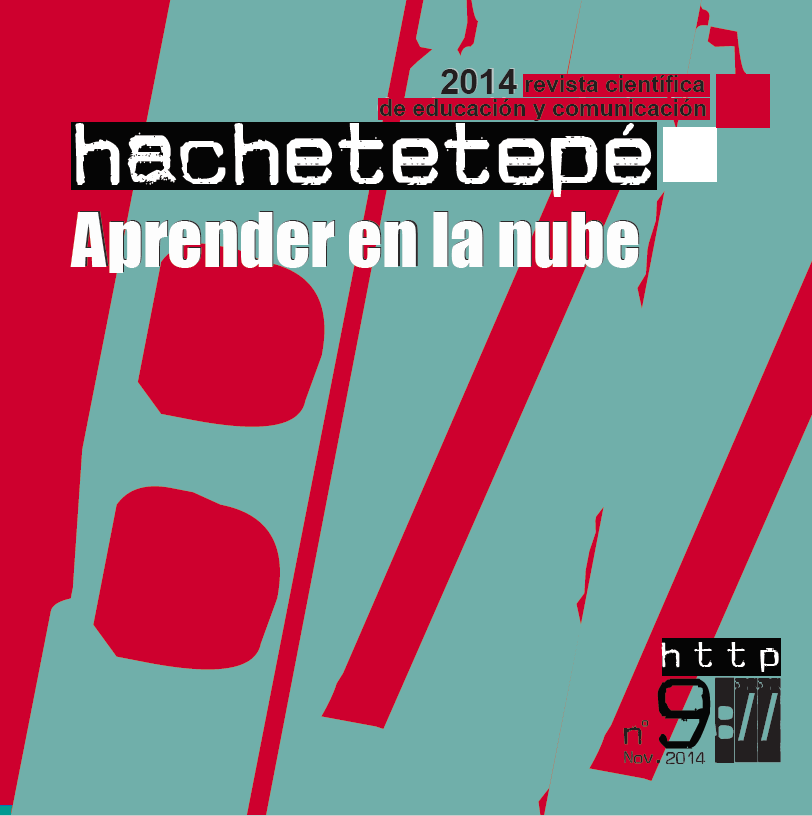Integration of ICT in a CIFP. Start of an educational experience “La Santa Espina”
Abstract
In the teaching of vocational training, ICTs are progressively taking great relevance, so we present the beginnings of an educational experience an educational carried out CIFP “La Santa Espina “reference you to the educational use of ICT, after the implementation of a project Innovation Education. With this approach we are pretending to give a response to identified needs and to some extent demanded by the educational community. To implement this proposal we have had many meetings by teachers , where decisions have been taken to implement different tools that would help us to develop the educational coordination (Dropbox), determine the choice of new spaces and environments learning, taking it to the Virtual Classroom provides the Junta de Castilla y León under the development of resources for schools . All this is leading to a change in the training model of a traditional and practical style to a collaborative and constructive space.
Keywords
Downloads
How to Cite
License

This work is licensed under a Creative Commons Attribution-NonCommercial-NoDerivatives 4.0 International License.
Those authors who have published with this journal, accept the following terms:
- They will retain their copyright and guarantee the journal the right to first publication of their work, which will simultaneously be subject to the Creative Commons Attribution License . They may be copied, used, disseminated, transmitted and publicly displayed, provided that the authorship, url, and magazine are cited, and are not used for commercial purposes. No derivative works are allowed.
- They may adopt other non-exclusive license agreements for the distribution of the published version of the work (e.g., deposit it in an institutional telematic archive or publish it in a monographic volume) provided that the initial publication in this journal is indicated.
- Disseminate your work through the Internet (e.g., in institutional telematic archives or on your website) once the manuscript is accepted, which may lead to interesting exchanges and increased citations of the published work. (See The effect of open access).
Hachetetepé. Scientific journal of education and communication does not charge a fee for the submission of manuscripts or for the publication of its articles.
References
Aparici, R. (2003) Comunicación educativa en la sociedad de la información. UNED: Madrid.
Ballesteros, J. (1989). Posmodernidad decadencia o resistencia. Madrid: Tecnos.
Barca Lozano, A y Cols (1997) Procesos de aprendizaje en ambientes educativos. Madrid: Ramón Areces.
Bericat, E. (1998) La integración de los métodos cuantitativos y cualitativos en la investigación so-cial: significado y medida. Barcelona: Ariel.
Buckingham. D. (2002) Crecer en la era de los medios electrónicos. Madrid. Ediciones Morata SL.
Carr W. y Kemmis S. (1988). Teoría crítica de la enseñanza, la investigación-acción en la formación del profesorado. Barcelona: Martínez Roca.
Durá, A. Pérez JM (1977) La agricultura en el medio rural. Madrid: Paraninfo.
Elliott, J. (1990). La Investigación Acción en Educación. Madrid: Morata.
Flick, U. (2004). Introducción a la Investigación Cualitativa. Madrid: Morata.
García Hoz, Víctor (1994) Problemas y Métodos de investigación en educación personalizada. Ma-drid: Rialp.
Goetz, J.P y LeCompte MS. (1998). Etnografía y diseño cualitativo en investigación educativa. Ma-drid: Morata.
Jarillo Mossi, J.C. (1997). La organización en la era de la información. Aprendizaje, innovación y cambio. Serie McGraw-Hill de Management.
Mackernan, J. (1999). Investigación acción y currículum. Madrid: Morata.
Vázquez, R. y Angulo, F. (2003). Introducción a los estudios de casos. Los primeros contactos con la investigación etnográfica. Málaga: Aljibe
Rodríguez Gómez, G.; Gil Flores, J. y García Jiménez, E. (1999). Metodología de la investigación cualitativa. Málaga: Aljibe.
Stake, R.E. (2010). Investigación con estudio de casos. Quinta edición. Madrid: Morata.
Taylor, S. Y R Bodgan (1990). Introducción a los Métodos Cualitativos de investigación. Buenos Aires: Paidós
Woods, P. (1987). La escuela por dentro. La etnografía en la investigación educativa. Barcelona: Paidos.
Webgrafía
CIFP “La Santa Espina”. Platforma educative del centro. Web official. (http://cfasantaespina.centros.educa.jcyl.es/sitio/index.cgi). (Recuperada el 9 de abril de 2014).
Mendoza Palacios, R. (2006) “La cultura tecnológica en la sociedad de la información en el Marco del siglo XX”. Estudio social. El Centro de Tesis, Documentos, Publicaciones y Recursos Educativos más amplio de la Red.b Monografias.com S.A. (http://www.monografias.com/trabajos37/cultura-tecnologica/cultura-tecnologica.shtml) (Consultada el 12 de septiembre de 2006).
Johnson, R y Kuby P (2005). Estadística elemental, lo esencial (3ª ed). Thomson. Wikipedia (http://es.wikipedia.org/wiki/Encuesta) (Recuperada el 9 de abril de 2014).






